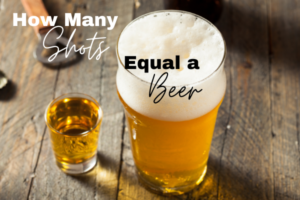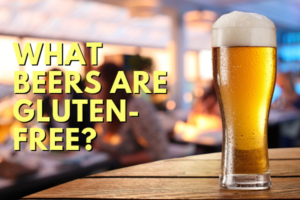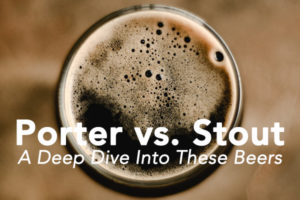Looks can be deceiving indeed.
Though a dark lager, the Schwarzbier is actually a very easy drink, which makes it great for both summer and even winter with its hints of chocolate, coffee, and vanilla flavors.
But that’s not the most interesting thing about this German lager.
The Schwarzbier is also the oldest consistently brewed beer in history, being the only one with solid scientific findings to back it up (more on that later!).
Now, if that makes this dark lager sound intimidating, then read on because it’s actually not very complicated to make.
It’s also a very approachable beer not only in terms of brewing but also in taste.
All you need to learn is balancing the malts and the hops to get that interestingly dark and almost opaque appearance but with a mild, non-roasty flavor.
Yes, beer newbies will surely love it too!
So let’s get brewing!
Schwarzbier History
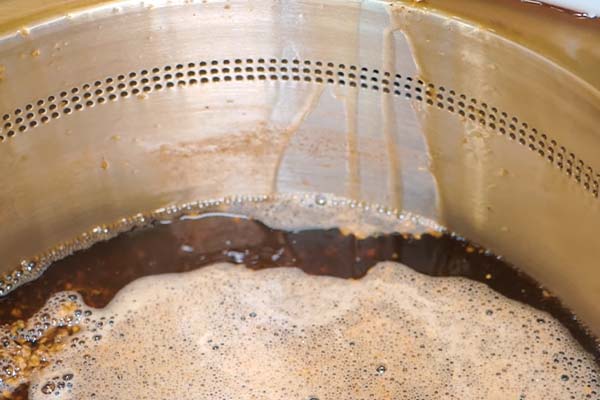
Yep, you’ve guessed it!
Schwarzbier literally means “black beer” in German.
As mentioned earlier, its status as the oldest consistently brewed beer is backed up by scientific findings. Turns out, it’s already in many people’s palette before it’s even named!
Now, this is grand.
Schwarzbier is concluded to be thousands of years old. And not just one thousand but more than three thousand years.
But it’s just recently when this fact was first discovered.
We already know that Germany- and soon, America- has this interesting black beer. But we didn’t know that it was drunk by high-ranking Celts before!
Here’s the kicker…
…in 1935, archeologists discovered evidence for this in a tomb that apparently held a Celtic. It’s located 7 miles from Kumbalch, Bavaria.
Along with the body of a Celt, which was later identified as a prominent and high-ranking person, were weapons and other goods that his people thought he’d need in the afterlife.
And among these goods…
…was a black beer along with pieces of half-baked bread. So, what about it? Well, that half-baked bread was what the Celtics used to start the fermentation of their beer.
This tomb is dated to be around 800 BC, so it’s almost 3,000 years old. That being said, it’s speculated that the black beer is even older than that!
Furthermore…
…because it was a black bear and it was made and found near Kulmbach, it’s most likely the ancestor of the modern Schwarzbier that we enjoy today.
Braunschweig or Brunswick’s first documentation of Schwarzbier as a beer-brewing style dates from 1390.
Apparently, a beer known as Braunschweiger Mumme was made here.
What’s more, Thuringia and Northern Bavaria were making beers in a similar style at this same time period, too.
Because the first lagers were still yet to be introduced…
…these dark beers are believed to have originally used ale yeast. It wasn’t until about three centuries later that lager brewing would be popular.
Oh, and this dark German lager is still being brewed in that very place today like how it’s always been for thousands of years now. The earliest indication of Kulmbach being a brewing hub was dated 1174.
This is also supported by several written Germanic records about brewing, among other unearthed pieces of evidence. So, many authorities actually believe that Kulmback may just be the world’s oldest functioning brewing site in the world!
Many other societies also had large brewing hubs back then, such as the ones in the Middle East. But most of them faded away and became inactive over time.
And what’s cooler?
If you’re a big beer enthusiast, you’ve most probably known about the Kulmbacher Kloster Mӧnchshof Schwarzbier or “a black beer that’s from the courtyard cloister of the monks.”
It was in Kulmbacher that this Schwarzbier variety was first brewed by the monks and is still being brewed today.
Talk about being legendary!
Style
Don’t be fooled. Many people tend to judge Schwarzbier as a strong beer, thanks to its almost black color. But the truth is, its style and taste are actually comparable to a pale lager or ale.
As a matter of fact…
…Schwarzbier has always been compared to the Bavarian or Munich Dunkel because of its dark color. Some people even go so far as to say that Schwarzbier is a darker form of the Dunkel.
But it’s all nothing more than just assumptions because not only is the Schwarzbier more moderate in flavor and aroma, but it’s also much drier and edgier in profile than the Munich Dunkel.
It may be darker than the already dark Dunkel…
…but it doesn’t have the qualities most dark beers have, such as the roast character found in most British porters.
Moreover, it also barely has a fruity or tart flavor. Rather, it’s mostly bittersweet, with chocolate, vanilla, or even coffee undertones.
And unlike most German beers…
…it doesn’t have any outstanding bitter flavor. It’s also just a bit malty. According to the BJCP, Schwarzbier has 22 to 32 IBU and an initial gravity of 1.046 to 1.052.
Characteristics of the Style
- Appearance
According to the Beer Judge Certification Program, this dark beer color ranges from 17 to 30 SRM, which is very dark.
As mentioned earlier, it’s much darker than its dark European lager cousin, the Munich Dunkel. Almost opaque, its shade ranges from dark brown to sepia and even black.
What’s cooler…
…is if it’s not entirely black or dark brown, you’d also see a ruby tint around it.
As for its head foam, it could be medium to high in thickness, which only adds to this dark treat’s fascinating appearance.
While its foam may have a tan color most of the time, it can also be off-white or completely white, depending on the lager yeast used.
Its clarity is good, though it may not always be obvious due to its dark color.
- Aroma
Schwarzbier’s aroma is as interesting as its history and style.
First off, the sweetness coming from the Munich malt typically dominates its aroma, but often, there’s a hint of the scent of noble hop.
This sweet malt aroma can be like that of bread crust or a piece of toasted bread with a tone of Chocolate, nuts, toffee, and sometimes, caramel. It could be roasty but never burnt.
But that’s only the rich Schwarzbier variety.
You might also come across a more neutral variety, with a light malty aroma that’s cleaner and less sweet.
An authentic Shwarzbier shouldn’t have any fruit esters or diacetyl though some varieties have spicy, herbal, or floral aromas.
- Mouthfeel
Along with an interesting aroma and flavor profile comes an equally interesting mouthfeel.
A beer’s mouthfeel is closely connected to its flavor, as it’s also the result of whatever you throw in your brew.
Most people assume that a Schwarzbier would be rich, full-bodied, warm, and astringent because of its almost harsh color.
But it’s far from harsh.
If anything, its mouthfeel is the perfect balance of richness and neutrality.
It has a light to medium body. Yes, not heavy and rich as most have expected it to be!
Schwarzbier doesn’t feel harsh in the mouth at all, so it’s also a good beginner’s beer. Because of the fermentables, it may feel firm on the mouth while still maintaining its lightness.
Though a bit sweet in taste and aroma…
…overall, it’s never cloying. It’s not overly sweet or rich. And this might surprise you, but it also has low astringency. That means that it doesn’t have that puckering taste that usually comes with dryness. It’s not vinegary at all.
It leaves a feeling that’s a bit dry but it could also be warming due to the alcohol.
As for the carbonation, we’re not going light here. It’s mostly medium to moderately high carbonation with good retention.
- Taste
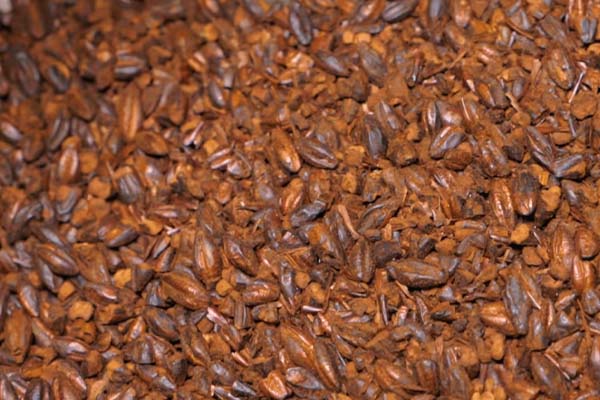
Munich malt is originally the base malt for this. And the resulting taste is complicated in a pleasing way.
The dominating flavor should always be malt. And it’s that bready taste that reminds you of a toast or a nice bread crust, thanks to the melanoidins that have developed during the brewing process.
And for more delightful complexity…
…most of the time, Schwarzbier also has chocolatey, nutty, toffee, and even caramely undertones. How fun, right?
But on the other hand, it should go more than being undertones as too much of these flavors would most definitely give you Schwarzbier a burned or roasted flavor, which is a big no-no if you’re making one.
Because of this…
…while most dark beer styles use dark malts and roast them to burnt perfection to achieve a nice dark hue.
But we don’t do it in here. We don’t burn specialty grains.
For Schwarzbier, roasted malts such as any Carafa type are usually used for very subtle roasted flavor and color.
Aside from this…
…roasted malts that don’t have husks can also add a chocolatey flavor and color without the burnt flavor and acid-like most dark beer varieties.
- Food Pairings
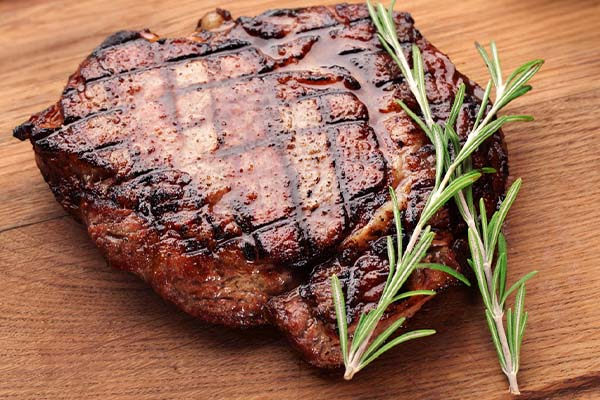
The darkest lager style there is, Schwarzbier isn’t overly rich, burnt, or overwhelming. Rather, it has just the right amount of toasted bread flavor with a chocolate undertone, sometimes with caramel as well.
Because of its moderate sweetness and a bit of creaminess, it’s best paired with food and snacks that are smokey, crispy, and best of all, bright in their taste.
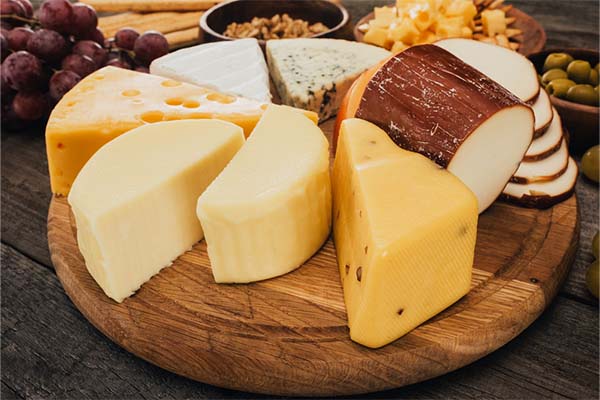
Tarts and fruits will especially counter its chocolatey and roasted undertones with their bright flavors, making it a fascinating symphony of flavors that go perfectly with each other.
In case you need more ideas…
…take a look at our favorite dishes to pair with Schwarzbier. And yes, it does go well with luxurious foods.
- Smoked cheese
- Gouda cheese
- Fruit-infused cheeses
- Grilled or smoked meat
- Biscuits
- Tarts and pies
- Fruits
- Mushroom Strudel
- Steak
Brewing a Good Dark Lager Schwarzbier
The secret to making the perfect Schwarzbier recipe is balance, especially between the malts used.
No element should overpower the other, except, of course, the base malt because if your aim is to make a basic Schwarzbier recipe, it should smell and taste mostly of bread.
Malt/ Grain
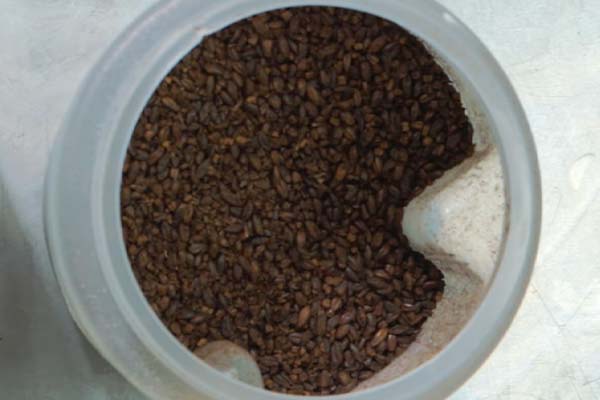
Typically, the malts used for a Schwarzbier recipe are Munich malt, Pilsner malt, and finally, the specialty grains to complete the grain bill and balance it.
Remember this:
Munich should always be the base for your Schwarzbier. .
Most brewers would then use Pilsner malt and then about two dark specialty malts.
Now, the proportions for these malts vary greatly.
If you want to achieve a Schwarzbier that’s as authentic as possible, you should know that the greater the amount of Munic there is, the original your Schwarzbier recipe will be as the earlier recipes have more Munich malt in them.
That means that you can definitely use 100% Munich or as low as 20%, depending on your goal. The difference will be filled out by the Pilsner malt and the bits of specialty ones.
In case you didn’t know…
…the Munich malt gives your beer a bready and toasty aroma and flavor, sometimes, nuttiness too. It creates the distinct bittersweet quality that Schwarzbier is known for.
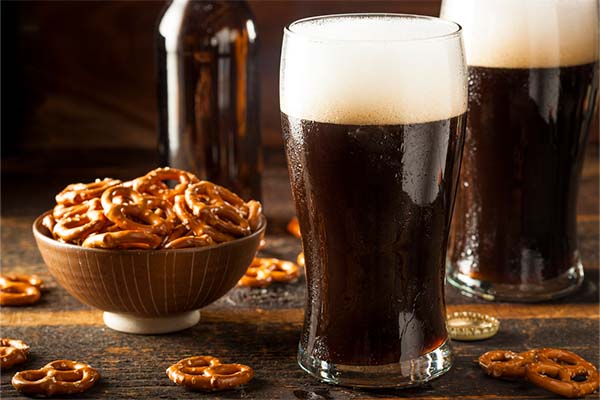
Meanwhile, the Pilsner balances it all out by lending a clean and crispy character. Thanks to this malt, the Schwarz isn’t as heavy and rich as a dark beer usually is. It gives it a light balance.
Wondering about the specialty malts?
We’ve covered this a bit earlier, but you can use mid-colored crystal malts or even a chocolate malt to add some darkness to your beer’s color.
And because we want to achieve that iconic black color, you have to get it from your specialty malts, too.
But before that, know that we don’t use what is normally used for other black lagers because if we do that, you’ll end up with a roasted and burnt taste.
As what we’ve mentioned earlier, you can resolve this by using black malts that’s been dehusked.
The result?
The color goes up but the roastiness doesn’t! That means that you get the black color but without the burned flavor!
Moreover, also remember to avoid using too much dark malt or chocolate malt as they can still give a burnt flavor to your Schwarz.
Hops
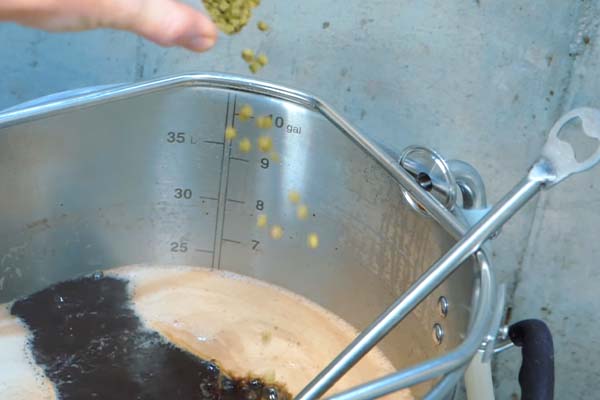
Hop bitterness should still be obvious in Schwarzbier, but it shouldn’t overpower everything.
We’re talking about a very muted hop flavor.
That being said, hop flavor should be kept to a minimum.
German noble hops have a soft aroma and a mild flavor. Most of the time, they’re also just moderate to mildly bitter, which is just what we need for a Schwarzbier recipe!
One of the best hops for this is Hallertau and Tettnang.
Yeast
Because we’re aiming for a clean and light lager with good clarity, look for a clean-fermenting yeast, too. The most recommended ones are:
- White Labs WLP830 or German Lager
- Wyeast 2206 or Bavarian Lager
- Wyeast 2007 or Pilsner Lager
Conclusion
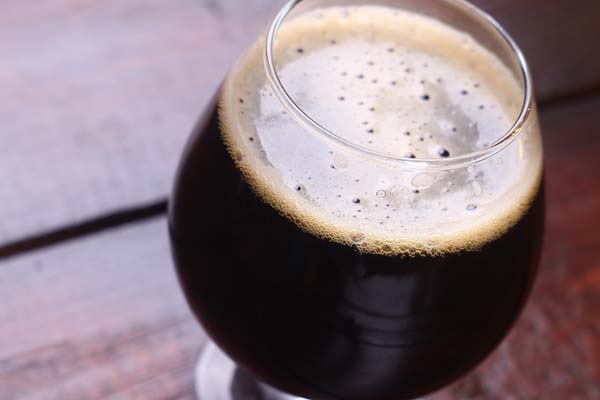
Deemed as the darkest out of all lager styles, Schwarzbier is a complete surprise because it’s not dark and heavy in flavor as expected of dark beers.
Rather…
…it’s surprisingly light, clean, and easy with a bit of chocolatey, nutty, or caramel undertones in some cases.
This unpredictable color, aroma, and flavor profile make it intimidating for some. But it’s actually pretty simple, especially if you’ll look at its grain bill!
It’s just a matter of balancing, really.
And don’t you just love it when you’re sipping a drink that’s been drunk by the legendary Celtics many years ago?
Best of all…
…it’s great for summer for its lightness, but it’s also an ideal beer for the winter, thanks to its flavor.
So if you’re thinking of brewing one, this is your sign to do so!

